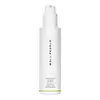What's inside
What's inside
 Key Ingredients
Key Ingredients

No key ingredients
 Benefits
Benefits

 Concerns
Concerns

 Ingredients Side-by-side
Ingredients Side-by-side

Water
Skin ConditioningCocamidopropyl Betaine
CleansingLauryl Glucoside
CleansingDisodium Lauroyl Glutamate
CleansingAloe Barbadensis Leaf Juice
Skin ConditioningSodium Lauroamphoacetate
CleansingSodium Lauroyl Sarcosinate
CleansingSodium Chloride
MaskingButylene Glycol Laurate
EmollientHimanthalia Elongata Extract
Skin ProtectingBrassica Oleracea Italica Seed Oil
EmollientPelargonium Graveolens Flower Oil
MaskingCaprylyl/Capryl Glucoside
CleansingPolyglyceryl-3 Cocoate
EmulsifyingPolyglyceryl-10 Laurate
Skin ConditioningCaprylic/Capric Triglyceride
MaskingGlycerin
HumectantCitric Acid
BufferingCaprylhydroxamic Acid
Phenethyl Alcohol
MaskingWater, Cocamidopropyl Betaine, Lauryl Glucoside, Disodium Lauroyl Glutamate, Aloe Barbadensis Leaf Juice, Sodium Lauroamphoacetate, Sodium Lauroyl Sarcosinate, Sodium Chloride, Butylene Glycol Laurate, Himanthalia Elongata Extract, Brassica Oleracea Italica Seed Oil, Pelargonium Graveolens Flower Oil, Caprylyl/Capryl Glucoside, Polyglyceryl-3 Cocoate, Polyglyceryl-10 Laurate, Caprylic/Capric Triglyceride, Glycerin, Citric Acid, Caprylhydroxamic Acid, Phenethyl Alcohol
Ingredients Explained
These ingredients are found in both products.
Ingredients higher up in an ingredient list are typically present in a larger amount.
Aloe Barbadensis Leaf Juice comes from leaves of the aloe plant. Aloe Barbadensis Leaf Juice is best known for helping to soothe sunburns. It is also anti-inflammatory, moisturizing, antiseptic, and can help heal wounds.
Aloe is packed with good stuff including Vitamins A, C, and E. These vitamins are antioxidants, which help fight free-radicals and the damage they may cause. Free-radicals are molecules that may damage your skin cells, such as pollution.
Aloe Barbadensis Leaf Juice also contains sugars. These sugars come in the form of monosaccharides and polysaccharides, folic acid, and choline. These sugars are able to help bind moisture to skin.
It also contains minerals such as calcium, 12 anthraquinones, fatty acids, amino acids, and Vitamin B12.
Learn more about Aloe Barbadensis Leaf JuiceLauryl Glucoside sugar- and lipid-based cleansing agent. It is created from glucose and lauryl alcohol.
This ingredient is a surfactant, making it easier to rinse oil, dirt, and other pollutants away.
A British study found lauryl glucoside to cause skin sensitivity for some people. We recommend speaking with a professional if you have concerns.
Other names for this ingredient include "Lauryl Polyglucose", "Lauryl glycoside", and "D-Glucopyranoside".
Learn more about Lauryl GlucosideChances are, you eat sodium chloride every day. Sodium Chloride is also known as table salt.
This ingredient has many purposes in skincare: thickener, emulsifier, and exfoliator.
You'll most likely find this ingredient in cleansers where it is used to create a gel-like texture. As an emulsifier, it also prevents ingredients from separating.
There is much debate on whether this ingredient is comedogenic. The short answer - comedogenic ratings don't tell the whole story. Learn more about comegodenic ratings here.
The concensus about this ingredient causing acne seems to be divided. Research is needed to understand if this ingredient does cause acne.
Scrubs may use salt as the primary exfoliating ingredient.
Learn more about Sodium ChlorideWe don't have a description for Sodium Lauroamphoacetate yet.
Water. It's the most common cosmetic ingredient of all. You'll usually see it at the top of ingredient lists, meaning that it makes up the largest part of the product.
So why is it so popular? Water most often acts as a solvent - this means that it helps dissolve other ingredients into the formulation.
You'll also recognize water as that liquid we all need to stay alive. If you see this, drink a glass of water. Stay hydrated!
Learn more about Water